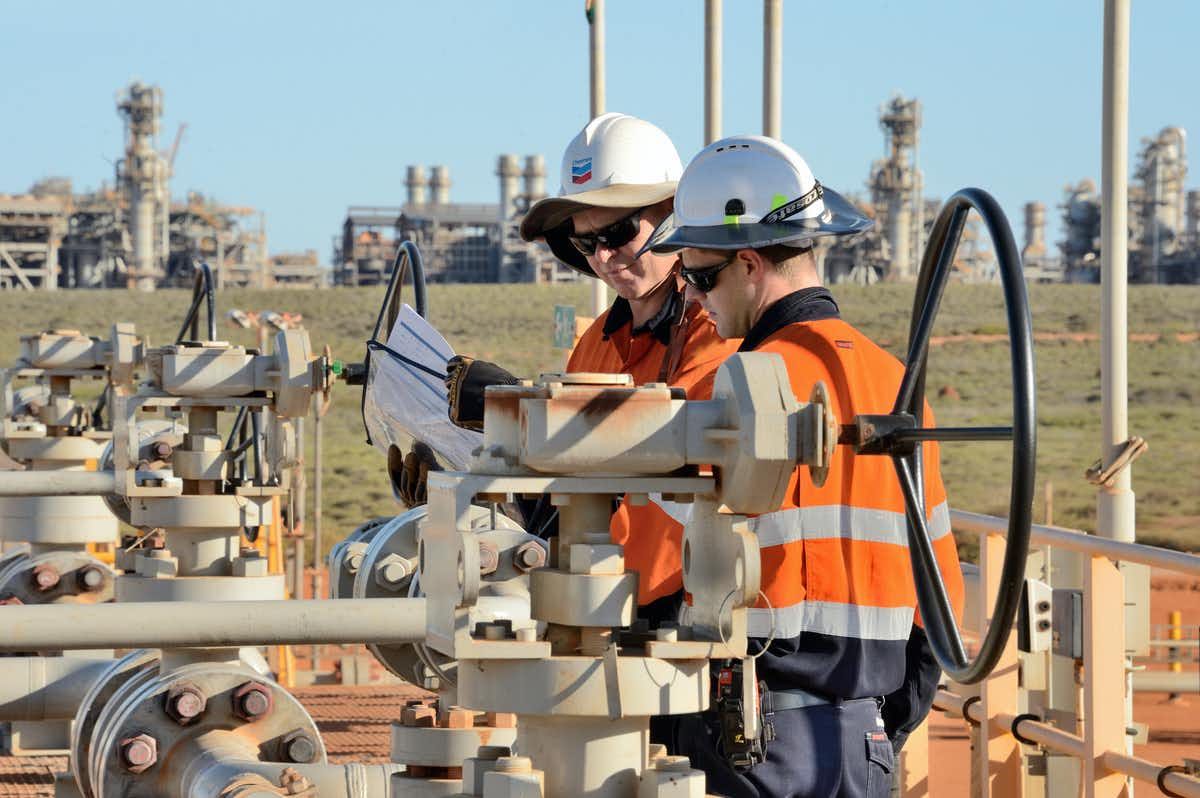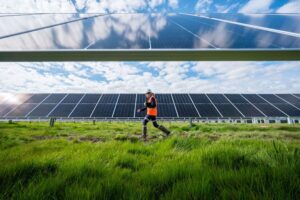There is a lot to unpack in the Albanese government’s Future Gas Strategy, a mind-boggling policy move that seeks to lock the fossil fuel into Australia’s energy and export – and greenhouse gas emissions – mix to 2050 and beyond.
Do we really need to continue digging up and exploiting new gas projects? And how does the government propose to square all this gas digging, exporting and burning with the race to net zero, which according to the science must happen by 2035, and not 2050.
Federal resources minister Madeleine King said on Thursday that her department has used “evidence and data” to establish six principles to underpin – or to justify – the Future Gas Strategy, and to move discussion “beyond unthoughtful slogans.”
Happily, a number of very thoughtful people and organisations have quickly set to work on fact-checking it. Here’s what they have found.
The government says: Additional gas investment and supply will be needed to avoid supply gaps in the domestic market and ensure sufficient supply for households, power generators and industry.
Experts say: According to IEEFA, a deeper focus on the demand-side of the equation – that is, firm and funded policies to get gas out of homes and businesses in Australia – could eradicate future supply gaps while reducing energy bills, thereby easing cost-of-living pressures, too.
According to a range of electrification and energy efficiency interventions modeled by IEEFA last year, residential buildings gas use can be cut to zero by the early 2040s while industrial gas use can be cut by more than 60% by 2045, compared with 2022.
In total, the interventions achieve a near 80% reduction in gas use across residential buildings and industry and significant gas demand reductions in the short term, with a reduction in gas demand of about 22% by 2027 and a 42% reduction by 2030 compared with 2022.
“We found that these reductions could eradicate the gas supply gap. They could also reduce the requirement to redirect northern gas supplies to meet southern states’ demand,” the report says.
Another IEEFA report, published in April 2024, notes that this approach would also “reduce gas users’ exposure to volatile gas prices, which are likely to worsen in a tight gas market.”
Clean Energy Investor Group says “sense checking the need for new gas generation is imperative, considering the role of multiple technologies, including increased electrification and the uptake of renewable fuels… in decarbonising the energy sector.”
The Australia Institute says, “Gas shortage? Yeah, nah.”
“Australia’s manufacturing industry could use 10% MORE gas and STILL use less gas than is used by the gas industry to convert gas to LNG! Australia exports 1,070% MORE gas than Australia’s entire manufacturing industry uses,” TAI says on Twitter.
Gas shortage? Yeah, Nah.
— Australia Institute (@TheAusInstitute) May 9, 2024
Australia's manufacturing industry could use 10% MORE gas and STILL use less gas than is used by the gas industry to convert gas to LNG!
Australia exports 1,070% MORE gas than Australia's entire manufacturing industry uses. pic.twitter.com/EHt9JTiVdh
Finally, Tim Buckley from Climate Energy Finance says the “gas shortage” narrative being lapped up by the government is “fabricated and fact-free.”
“East Australia produces 5 times as much gas as we use domestically, most of it exported and then sold back to us at outrageously inflated prices,” Buckley said on Thursday.
“[Claims of a gas shortage are] a ruse to expand the industry’s massive war-profiteering, as they pay next to no corporate tax here in the process.
“The only winners from the Future Gas Strategy are the multinationals. And the only gas shortage is a shortage of gas cartel ethics, aided and abetted by a government that appears to be suffering a severe case of industry capture.”
The government says: There will be growing global demand for Australian gas that will be sustained throughout the transition.
The experts say: According to IEEFA’s latest Global LNG Outlook, gas markets are actually headed for a supply glut, driven by “an unprecedented wave of capacity additions.” In this landscape, it says, Australia will find it tough to compete with the likes of Qatar and the US.
Meanwhile, some of Australia’s biggest customers, like Japan and South Korea, are already seeing declining gas demand, with further declines expected to 2030.
“Japan is already severely over-contracted, reselling more gas than Australia imports into the country,” says IEEFA’s lead gas financial analyst Josh Runciman. “China is already expected to be over-contracted by 2030.”
The government says: “Under all credible net zero scenarios, natural gas is needed through to 2050 and beyond, though its production and use will change over this period.”
The experts say: “What really gets me [about the Future Gas Strategy] is how honest the Australian government is, in planning for the worst-case outcome on climate change,” writes Ketan Joshi on LinkedIn.
“They don’t shy away from this: there are a collection of graphics in the full ‘analytical’ report that lay out that their own plans only make sense if there is a total global failure on climate change – if the planet heats beyond liveability and catastrophe and death ramp up to an unimaginable scale.
“What they do is present scenarios representing climate success, and climate failure, and frame them as simply ‘different opinions’ about the future. As if our actual lives, homes and communities aren’t at stake.”
The government says: Australia can increase gas exploration and lock in decades more consumption of gas while also reducing emissions. It can do this by using carbon capture and storage technologies and through offsets.
The experts say: Bill Hare, a climate scientist, adjunct professor of energy at Murdoch University and CEO of not-for-profit Climate Analytics, says Labor’s Future Gas Strategy will “undermine climate action and is a rejection of what science and energy expert are saying needs to be done to limit warming to 1.5°C.”
“Fossil gas is not a transition fuel. It’s one of the main contributors to global warming. In the last decade gas was the leading driver of the increase in fossil CO2 emissions, contributing to close to half of their growth,” Hare writes in a series of Tweets on X.
What the Albanese government is doing with its Future Gas Strategy is contributing to locking in 2.7- 3°C global warming, which will have catastrophic consequences. pic.twitter.com/WNkOSd6hyJ
— Bill Hare (@BillHareClimate) May 9, 2024
On the promise of carbon capture and storage, Simon Holmes à Court says, “let’s be honest… Labor on carbon capture and storage #CCS is no more credible than the LNP on small modular reactors #SMR.”
IEEFA agrees. “Carbon capture, utilisation and storage is an expensive, unproven technology, with a history of failure and underperformance,” says Runciman, pointing to a report by Amandine Denis-Ryan, published earlier this year.
The report finds that CCS sequestered about 0.1% of global energy-related CO2 emissions in 2022 and, according to the Intergovernmental Panel on Climate Change (IPCC), will account for an average of 2.4% of CO2 mitigation by 2030, even if implemented at its full planned potential.

Source: IEEFA
“Further, CCS only deals with a fraction of oil and gas projects’ emissions, as it ignores the emissions when oil and gas is burned by the consumer, which represent 85%-90% of total emissions,” the report says.
“In addition, about three quarters of CCS projects are engaged in enhanced oil recovery, which creates more emissions, negating the initial reduction.”
Samantha Hepburn, a professor of law at Deakin University says talk of CCS is and low-emissions gas is a fig leaf – Australia cannot open new gas projects and still meet its climate goals, she writes on The Conversation.
“If we want to make sure we have enough domestic supply on the east coast, we could simply reserve some of our export gas, as Western Australia has done.
“Vocal independent David Pocock described the strategy as ‘morally bankrupt‘,” says Hepburn.
“It’s hard to write that line of argument off completely. As the International Energy Agency has said, large new fossil fuel projects are simply not compatible with cutting emissions and tackling climate change.”









